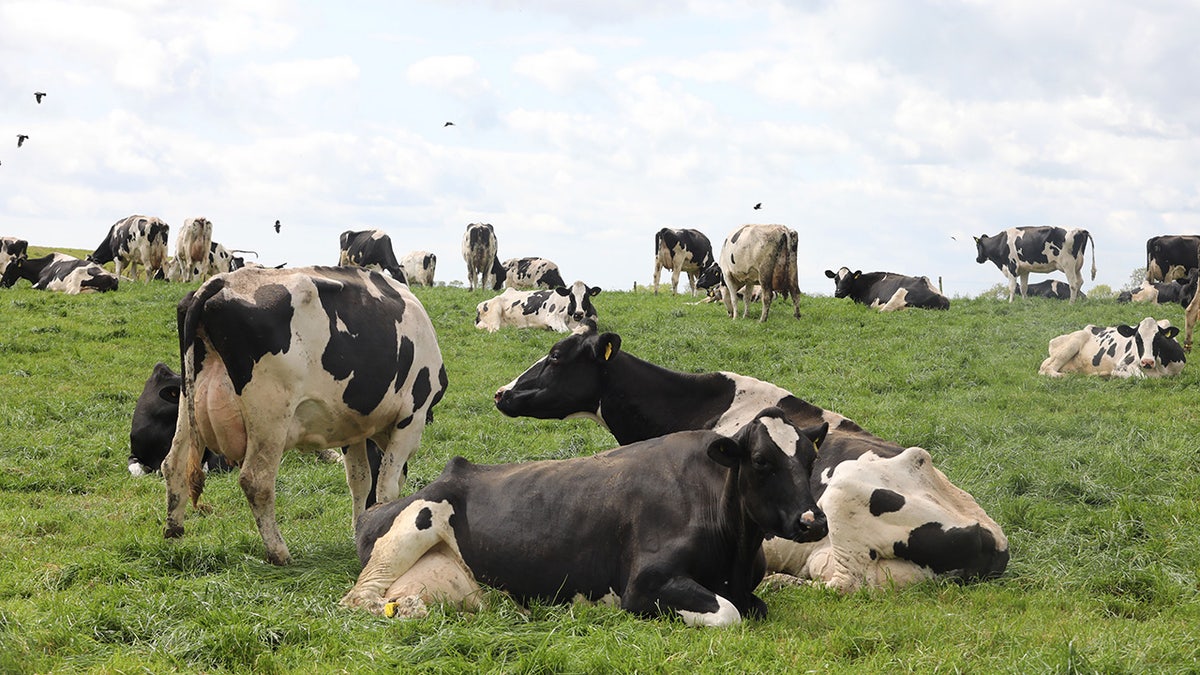by Dr. Joseph Mercola, Mercola:

STORY AT-A-GLANCE
- The Irish government recently proposed reducing Irish cow herds by 10% over the next three years to meet the European Union’s climate change targets, which includes a 25% reduction in emissions from farming by 2030
- Properly raised and grazed livestock have a tremendously beneficial impact on ecological health and local microclimate
- When land is left barren, it changes the microclimate on that swath of land. Two-thirds of the landmass on earth are already desertifying, which is why macroclimate is also impacted
TRUTH LIVES on at https://sgtreport.tv/
- While climate activists claim they’re promoting a “green” agenda, everything they propose suggests otherwise. Instead of transitioning factory farming into a regenerative model, which we know works wonders, they’re willfully ignoring the laws of nature upon which organic and sustainable environmentalism are based
- The war on climate change, as currently fought, is ultimately a war on humanity itself
The war on climate change, as currently fought, is ultimately a war on humanity itself, and the evidence for this is stacking up by the day. It began with nitrogen fertilizer restrictions1 in the summer of 2022, which alone is driving farmers out of business, and has now progressed to the needless culling of livestock — all in the name of combating climate change.
But what difference will climate have if there’s no food production? Without food, humanity dies. End of story. Of course, the unspoken plan is to replace all of these banned natural foods with genetically engineered lab-created fare, but that’s not going to do our health any favors, so humanity will still be facing extinction, just a slower and more excruciating one.
Culling Cows to Meet Climate Change Goals
In Ireland, the government recently proposed reducing Irish cow herds by 10% over the next three years to meet the European Union’s climate change targets,2 which include a 25% reduction in emissions from farming by 2030.3 The same insanity is creeping into the U.S. as well. The EU is just on a faster track. As reported by Cowboy State Daily, June 2, 2023:4
“Climate activists are coming for livestock producers and farmers. European governments have been targeting the agriculture industry for several years … Ireland’s government may need to reduce that country’s cattle herds by 200,000 cows over the next three years to meet climate targets.
In an effort to reduce nitrogen pollution, Reuters reported the European Union last month approved a $1.6 billion Dutch plan to buy out livestock farmers. Now the Biden administration is targeting American agriculture.
Special President Envoy For Climate John Kerry recently warned at a climate summit for the U.S. Department of Agriculture that the human race’s need to produce food to survive creates 33% of the world’s total greenhouse gasses. ‘We can’t get to net-zero. We don’t get this job done unless agriculture is front and center as part of the solution,’ Kerry said.”
Cattle Promote Ecological Health and Healthy Climate Cycles
With those words, Kerry shows his ignorance and lack of qualifications for the job as climate czar, as properly raised and grazed livestock have a tremendously beneficial impact on ecological health and local climate. As agricultural advocate Kacy Atkinson told Cowboy State Daily:5
“Groupthink happens a lot around the climate change conversation. We get tunnel visioned on one piece of it without considering the full ramifications of what’s going to happen if we remove cattle from the land. Cattle contribute to drought resistance, soil health and wildfire reduction.
Just before cattle were introduced to North America and the industry began raising them, there were thousands of buffalo roaming the plains. Cows and buffalo are both ruminants, which is a type of animal that brings back food from its stomach and chews it again.
These animals’ digestive systems produce methane emissions. Today’s cattle population is similar in numbers to that of the buffalo herds. So, the methane emissions from ruminant animals aren’t anything new.”
Only Certain Agricultural Practices Promote Climate Change
In the 2013 TED Talk above, ecologist and international consultant Allan Savory explains why and how grazing livestock are the solution to climate change. Erratic climate is in large part caused by desertification (when fertile land dries up and turns to desert), which is what current conventional agricultural practices encourage.
This situation can only be effectively reversed by dramatically increasing the number of grazing livestock, Savory says. In essence, it’s not an excess of livestock that are causing the problem, but that we have far too few, and the livestock we do have, we’ve not managed properly.
To improve soil quality, we must improve its ability to maintain water. Once land has turned to bone-dry desert, any rain simply evaporates and/or runs off. The solution is twofold: The ground must be covered with vegetation, and animals must roam across the land. The animals must be bunched and kept moving to avoid overgrazing, thereby mimicking the movement of large wild herds. The animals serve several crucial functions on the land, as they:



